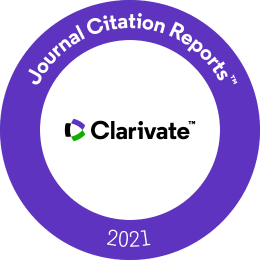Received:
2018-11-16 | Accepted:
2019-02-27 | Published:
2019-03-30
Title
The perceived value of social media marketing: an empirical study of online word-of-mouth in Saudi Arabian context
Abstract
Despite the dramatic increase in the use social media marketing and huge business investments allocated to online marketing, little is known about consumers’ perceived value of social media marketing. The perceived value concept is key factor in traditional consumer behavior.However investigations into online channels have not been done intensively. The present work has succeeded in demonstrating the role of perceived value on online consumer behavior and its influences on online word of mouth (OWOM) and behavioral loyalty. Based on a sample of 525 respondents who were social media users, the study used Partial Least Squares (PLS) technique to analyze the data. The study has succeeded in filling various gaps of knowledge and literature. The gaps addressed by the present work includes aspects pertaining to perceived value of social media marketing, online word of mouth, behavioral loyalty on online channels, etc.
Keywords
consumer behavior, social media marketing, online word of mouth, perceived value, customer loyalty
JEL classifications
M31
URI
http://jssidoi.org/jesi/article/301
DOI
Pages
1512-1527
Funding
This project was supported by the Deanship of Scientific Research at Prince Sattam Bin Abdulaziz University under the research project # 2016/01/5721
This is an open access issue and all published articles are licensed under a
Creative Commons Attribution 4.0 International License
References
Andreassen, T. W. and Streukens, S. (2009). Service Innovation and Electronic Word-of-Mouth: Is it Worth Listening To? Managing Service Quality, 19(3), 249–65.
Search via ReFindit
Bhatnagar, A. and Ghose, S. (2004). Online Information Search Termination PatternsAcross Product Categories and Consumer Demographics. Journal of Retailing, 80 (3), 221–8. https://doi.org/10.1016/j.jretai.2003.10.001
Search via ReFindit
Blazevic, V., Hammedi, W., Garnefeld, I., Rust, R. T., Keiningham, T., Andreassen, T. W., Donthu, N. and Carl, W. (2013). Beyond Traditional Word-of-Mouth: An Expanded Model of CustomerInfluence. Journal of Service Management, 24(3), 294–313.
Search via ReFindit
Chen, Y., Xie, J. (2004).Online Consumer Review: A New Element of Marketing Communications Mix. Working Paper, Department of Marketing, University of Florida.
Search via ReFindit
Dellarocas, C. N. (2003). The Digitization of Word-of-Mouth: Promise and Challenges of Online Feedback Mechanisms. Management Science, 49(10), 1407–24. http://ccs.mit.edu/dell/digitization%20of%20word-of-mouth.pdf
Search via ReFindit
Dhar, V. and Chang, E. A. (2009). Does Chatter Matter? The Impactof User-Generated Content on Music Sales. Journal of Interactive Marketing, 23(4), 300–7.
Search via ReFindit
Duana, W., Gu, B. and Whinston, A. B. (2008). The dynamics of online word-of-mouth and product sales—An empirical investigation of the movie industry. Journal of Retailing, 84(2), pp.233–242. Available at: https://doi.org/10.1016/j.jretai.2008.04.005
Search via ReFindit
Ellison, G., Fudenberg, D. (1995). Word-of-Mouth Communication and Social Learning. Quarterly Journal of Economics, 110(1), 93–125.
Search via ReFindit
Fishburn, PC, 1970. Utility theory for decision making, Wiley, New York.ed.
Search via ReFindit
Fletcher, H.D, Smith, Fornell, C., and Larcker, D.F. (1981). Evaluating structural equation models with unobservable variables and measurement error. Journal of Marketing Research, 18(1), 39-50. https://doi.org/10.2307/3151312
Search via ReFindit
Godes, D and Mayzlin, D. (2004). Using Online Conversations to StudyWord of Mouth Communication. Marketing Science, 23(4), 545–60. https://doi.org/10.1287/mksc.1040.0071
Search via ReFindit
Godes, D.and Silva, J. C. (2012). Sequential and Temporal Dynamics of OnlineOpinion. Marketing Science, 31(3), 448–73.
Search via ReFindit
Hair, J. F., Hult, G. T. M., Ringle, C., &Sarstedt, M. (2016). A primer on partial least squares structural equation modeling (PLS-SEM): Sage Publications.
Search via ReFindit
Henseler, J., Ringle, C. M., and Sarstedt, M. (2015). A new criterion for assessing discriminant validity in variance-based structural equation modeling. Journal of the Academy of Marketing Science, 43(1), 115–135. https://doi.org/10.1007/s11747-014-0403-8
Search via ReFindit
Henseler, J., Ringle, C. M., and Sinkovics, R. R. (2009). The use of partial least squares path modeling in international marketing New challenges to international marketing (pp. 277-319): Emerald Group Publishing Limited.
Search via ReFindit
King, R. A., Racherla, P.and Bush, V. D. (2014). What We Know and Don't Know About Online Word-of-Mouth: A Review and Synthesis of the Literature. Journal of Interactive Marketing, 28, 167–183. https://doi.org/10.1016/j.intmar.2014.02.001
Search via ReFindit
Kozinets, R. V., De Valck, K., Wojnicki, A. C. and Wilner, S. J. S. (2010). Networked Narratives: Understanding Word-of-Mouth Marketing in Online Communities. Journal of Marketing, 74(2), 71–89. https://doi.org/10.1509/jmkg.74.2.71
Search via ReFindit
Kusumasondjaja, S. (2018). The roles of message appeals and orientation on social media brand communication effectiveness: An evidence from Indonesia. Asia Pacific Journal of Marketing and Logistics, 30(4), 1135-1158. https://doi.org/10.1108/APJML-10-2017-0267
Search via ReFindit
Laroche, M., Yang, S., McDougall, G. H.G. and Bergeron, J. (2005). Internet Versus Bricks-and-Mortar Retailers: An Investigationinto Intangibility and Its Consequences. Journal of Retailing, 81(4), 251–67.
Search via ReFindit
Lowry, P. B. and Gaskin, J. (2014). Partial Least Squares (PLS) Structural Equation Modeling (SEM) for Building and Testing Behavioral Causal Theory: When to Choose It and How to Use It. IEEE Transactions on Professional Communication, 57(2), 123-146.
Search via ReFindit
Maxham, J. G. Jr. and Netemeyer, R. G. (2002). Modeling Customer Perceptions of Complaint Handling Over Time: The Effects of PerceivedJustice on Satisfaction and Intent. Journal of Retailing, 78, 239–52. Available at http://thecustomerconnection.nl/docs/Maxham%20III%20&%20Netemeyer%20-%20Modeling%20customer%20perceptions%20of%20complaint%20handling%20over%20time.pdf
Search via ReFindit
Nunnally, J. C. (1978). Psychometric theory (2nd Ed.), New York: McGraw-Hill Book Company.
Search via ReFindit
Ringle, C. M., Silva, D. D, & Diógenes de Souza, B. (2014). Structural Equation Modeling with the Smart PLS. REMark: Revista Brasileira de Marketing, 13(2), 56-73. https://doi.org/10.5585/remark.v13i2.2717
Search via ReFindit
Senecal, S., Nantel, J. (2004). The Influence of Online ProductRecommendations on Consumers’ Online Choices. Journal of Retailing, 80, 159–6.
Search via ReFindit
Tirunillai, S., Tellis, G. J. (2012). Does Chatter Really Matter? Dynamics of User-Generated Content and Stock Performance. Marketing Science, 31(2), 198–215. https://doi.org/10.1287/mksc.1110.0682
Search via ReFindit
Trusov, M., Bucklin, R. E., Pauwels, K. (2009). Effects of Word-of-Mouth Versus Traditional Marketing: Findingsfrom an Internet Social Networking Site. Journal of Marketing, 73(5), 90–102.
Search via ReFindit














 RSS 1.0
RSS 1.0
